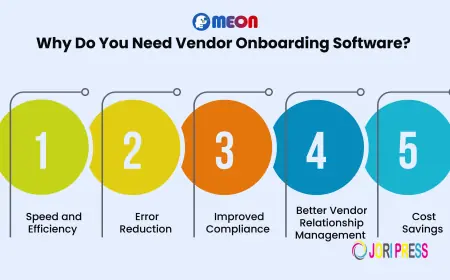Sustainable Sourcing and Production: Promoting Environmental Responsibility in the Mobile Mapping Market
Global Mobile Mapping Market size and share is currently valued at USD 34.7 billion in 2024 and is anticipated to generate an estimated revenue of USD 154.3 billion by 2034, according to the latest study by Polaris Market Research. Besides, the report notes that the market exhibits a robust 16.40% Compound Annual Growth Rate (CAGR) over the forecasted timeframe, 2025 - 2034
In its latest publication, Polaris Market Research presents an in-depth analysis of the Mobile Mapping Market. It captures the momentum, disruption, and evolution unfolding across this fast-moving industry. Offering a balanced mix of data-driven analysis and strategic insight, the report tracks the market’s historical development, evaluates its present state, and provides forward-looking projections. It goes beyond surface-level metrics to assess the dynamics shaping solution development, investment patterns, competitive positioning, and operational agility.
What Are Key Market Metrics?
Global Mobile Mapping Market size and share is currently valued at USD 34.7 billion in 2024 and is anticipated to generate an estimated revenue of USD 154.3 billion by 2034, according to the latest study by Polaris Market Research. Besides, the report notes that the market exhibits a robust 16.40% Compound Annual Growth Rate (CAGR) over the forecasted timeframe, 2025 - 2034
How Is the Market Performing Overall?
The mobile mapping market refers to the industry focused on the collection, measurement, and visualization of geospatial data using mobile devices and platforms equipped with advanced mapping technologies. Mobile mapping systems typically integrate hardware components such as GPS, LiDAR, radar, cameras, and sensors with software solutions to capture highly accurate, real-time spatial data while in motion. These systems are widely used in sectors such as transportation, construction, urban planning, agriculture, and environmental monitoring, enabling efficient mapping of large-scale areas with minimal human intervention. The market encompasses both hardware and software solutions, as well as related services, including mapping, surveying, and geospatial analytics. With the increasing integration of AI, 5G connectivity, and cloud-based processing, mobile mapping solutions are evolving into essential tools for smart city development, infrastructure management, and autonomous vehicle navigation. The market’s growth is also driven by government initiatives for geographic information systems (GIS) adoption and rapid technological advancements.
The Mobile Mapping market continues to witness steady expansion. The market is underpinned by rising demand across industries, technological development, and regulatory support in both developed and developing economies. The report outlines the latest global market value, forecasts its expected growth rate, and evaluates regional contributions to that growth. It analyzes the interplay of macroeconomic indicators, cross-border trade dynamics, and region-specific policy industry trends.
How Are Key Regions Contributing to Market Growth?
Regional trends, policies, and industry priorities are shaping distinct growth patterns across the world. While some regions are focused on scaling innovation and adopting advanced technologies, others are investing in infrastructure, local manufacturing, or digital transformation. This section provides a region-by-region breakdown of how local dynamics, regulatory frameworks, and economic drivers are influencing market performance.
North America
The report identifies North America as one of the leading Mobile Mapping market contributors, driven by its advanced infrastructure, high R&D investments, and early adoption of innovative technologies. The US and Canada remain the dominant forces, supported by a strong base of leading manufacturers, a favorable regulatory landscape, and a culture of innovation. The study also evaluates the role of sector-specific demand and provides insights into regional consumption patterns and competitive behavior.
Europe
Stringent regulatory frameworks and a growing emphasis on sustainability largely shape the market development across Europe. The report explores how EU-wide policies, such as environmental directives and digital transformation initiatives, are influencing adoption patterns. It also breaks down regional performance across major economies, including Germany, the UK, France, and Italy.
Browse Full Insights:
https://www.polarismarketresearch.com/industry-analysis/mobile-mapping-market
Asia Pacific
Asia Pacific is highlighted as one of the fastest-growing regions, fueled by rapid industrialization, digital infrastructure development, and rising domestic consumption. Countries such as China, India, Japan, and South Korea are examined in depth, with attention to government initiatives, local manufacturing capacity, and foreign investment inflows. The study also emphasizes how the region's cost-competitive production environment and booming middle class are influencing demand.
Latin America
The report explores Latin America's gradual market development. It assesses emerging opportunities in countries like Brazil, Mexico, and Argentina. The report discusses the strategic role of trade agreements, local innovation efforts, and investment incentives in shaping regional momentum.
Middle East & Africa
The report highlights how growing investments in infrastructure, industrial diversification, and digital transformation are driving market demand in the Middle East & Africa. Countries like the UAE, Saudi Arabia, and South Africa are examined for their strategic plans and national efforts to reduce dependence on traditional economic sectors.
key market players:
- Apple Inc
- DGT Associates
- Foursquare Labs, Inc
- Google Inc
- Leica Geosystems Inc
- Mapquest, Inc
- Microsoft Corporation
- Murphy Geospatial
- Teledyne Technologies Incorporated
- Tomtom NV
- Topcon
- Trimble Inc.
Conclusion
This report delivers a comprehensive analysis of the Mobile Mapping market, highlighting how diverse regional dynamics collectively shape the market’s growth and evolution. While global trends such as technological innovation, regulatory changes, and shifting consumer demands drive the overall market, regional variations in economic development, infrastructure, and policy create distinct growth trajectories. By examining key regions, the study provides actionable insights into localized market conditions and opportunities.
More Trending Latest Reports By Polaris Market Research:
Aerospace & Defense Coatings Market
Restaurant Management Software Market
Mexico Plastic Additives Market
Procure To Pay Solution Market
What's Your Reaction?
 Like
0
Like
0
 Dislike
0
Dislike
0
 Love
0
Love
0
 Funny
0
Funny
0
 Angry
0
Angry
0
 Sad
0
Sad
0
 Wow
0
Wow
0



















































